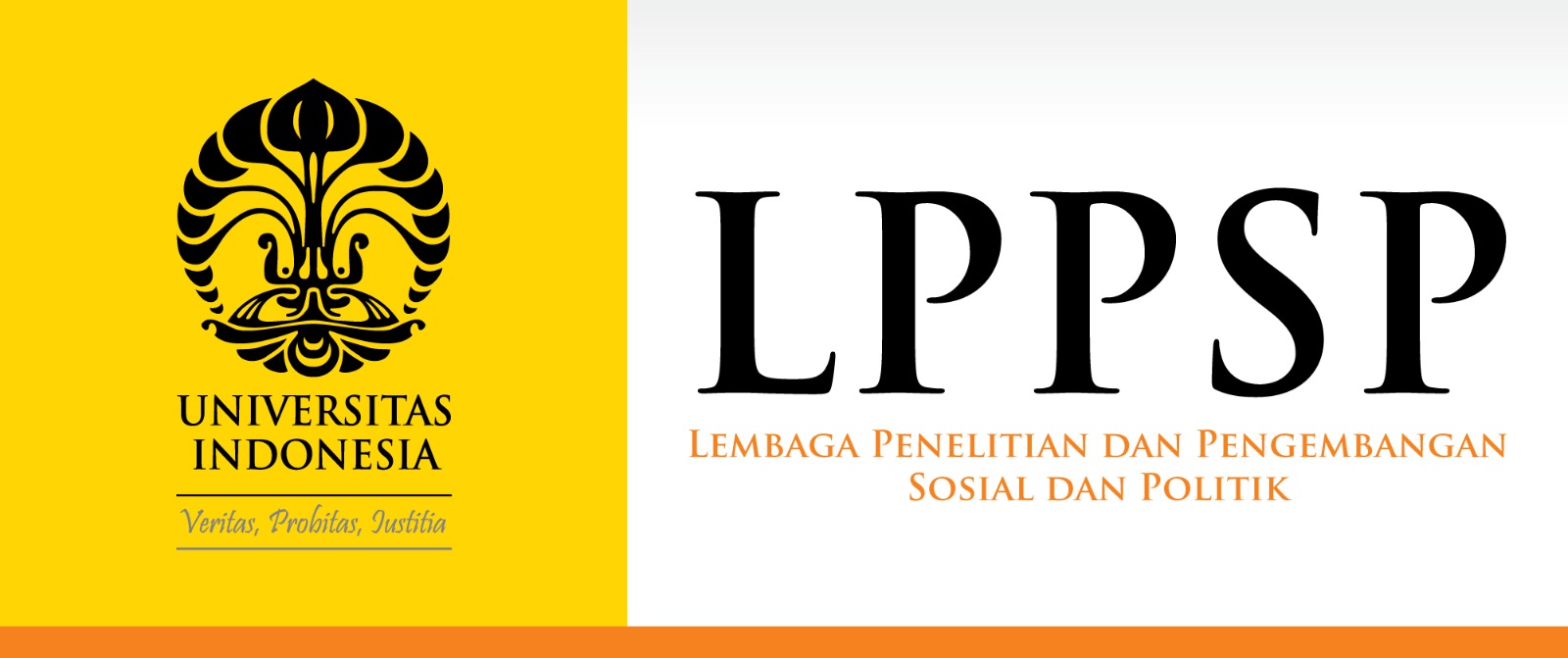JURNAL KOMUNIKASI INDONESIA
Abstract
Families that have children with ASD (Autism Spectrum Disorder) were vulnerable in terms of financial, emotional, energy, and time that causes tension between husbands and wives as parents in caring for their children with ASD. The main purpose of this study is to elaborateon the communication used by married heterosexual couples in negotiating a parenting role related to financial, emotional, energy, and time problems for their child with ASD by using relational dialectical theory. The data collection method used interviews. The participants’ selection used snowball. The participants consisted of three married heterosexual couples with three different ages of children with ASD in East Java. The results showed that there are dynamic changes related to the role of married couple participants in meeting financial, emotional, time, and energy needs for their children with ASD who have difficulties in social communication and repetitive, restricted behavior. In meeting all those needs, each participant does role sharing change when necessary and share tasks with respect and responsibility.They also accommodate changes by using collective consensus. The conclusion of this study is a compromise strategy was used by them when sharing roles related to financial, emotional, time, and energy for children with ASD.
Keluarga dengan anak ASD (Autism Spectrum Disorder) rentan akan kondisi finansial, emosional, tenaga dan waktu yang dapat memicu ketegangan antara suami dan istri sebagai orang tua dalam merawat anak ASD mereka. Studi ini bertujuanmengelaborasi komunikasi yang digunakan oleh pasangan heteroseksual yang sudah menikah dalam menegosiasikan peran merawat anak ASD terkait finansial, emosional, tenaga dan waktu dengan menggunakan teori dialektika hubungan. Metode pengumpulan data menggunakan wawancara. Cara mendapatkan tiga pasangan partisipan yang memiliki anak ASD dengan umur yang berbeda adalah dengan teknik snowball. Hasil menunjukkan ada perubahan yang dinamis terkait peran antar pasangan dalam memenuhi kebutuhan finansial, emosional, tenaga, dan waktu untuk anak ASD mereka yang memiliki kesulitan dalam komunikasi sosial. Setiap pasangan suami istri ini berusaha melakukan perubahan peran bila dibutuhkan dengan rasatanggung jawab dan saling menghargai satu sama lain. Mereka mengakomodasi perubahansecara kolektif dan melalui kesepakatan. Sehingga bisa disimpulkan dalam merawat anak ASD, mereka menggunakan strategi kompromi terkait finansial, emosional, tenaga, dan waktu.
References
Aji, S. Z. N. (2019). Hubungan Antara Dyadic Coping dan Kepuasan Pernikahan Suami Istri yang Memiliki Anak Berkebutuhan Khusus di Kota Semarang [Undergraduate thesis, Universitas Negeri Semarang]. UNNES Repository.
https://lib.unnes.ac.id/33662/American Psychiatric Association. (2013). Diagnostic and statistical manual of mental disorders: DMS-5. Washington DC: American Psychiatric Association Publishing.Apostelina, E. (2012) Resiliensi keluarga
pada keluarga yang memiliki anak autis. Jurnal Penelitian dan Pengukuran Psikologi, 1(1), 164-176.Baxter, L. A. (2004). A tale of two voices: relational di alectics theory. The Journal of Family Communication 4(3&4), 181-192.Baxter, L. A., &
Schrap, K. M. (2015, June 18). Dialectical Tension in Relationships. Retrieved September 18, 2020, from https://onlinelibrary.wiley.com/doi/full/10.1002/9781118540190.wbeic017: https://doi.org/10.1002/9781118540190.wbeic017DeVito, J.
A. (2004). The interpersonal communication book (10th ed). New York: Pearson.Erickson, C. A., Stigler, K. A., Corkins, M. R., Posey, D. J., Fitzgerald, J. F., & McDougle, C. J. (2005). Gastrointestinal factors in autism disorder: A critical
review. Journal of Autism Developmental Disorder, 35(6), 713-727.Freedman, B. H., Kalb, L. G., Zablotsky, B., & Stuart, E. A. (2012). Relational status among parents of children with autism spectrum disorders: a population-based study.
Journal of Autism and Developmental Disorders, 42(4), 539-548.Galvin, K. M., Bylund, C. L., & Brommel, B. J. (2012). Family Communication: Cohesion and Change (8th ed.). New York: Pearson.Guerrero, L. K., Andersen, P. A., & Afifi, W.
A. (2007). Close encounters:Communication in relationships (2nd ed.). Los Angeles: SagePublications.Irawan, R. (2015). Mengungkap rahasia autisme: deteksi dini autis sangat penting. Surabaya: Airlangga University Press.Kamphaus, R.
W., & Reynolds, C. R. (2007). Behavior assessment system for children-second edition (BASC-2): behavioral and emotional screening system (BESS). Bloomington, Minnesota:Pearson.Kementrian Kesehatan RI. (2020, April 2). Hari Peduli
Autisme Sedunia Pentingnya Pendampingan dan Edukasi bagi Anak Gangguan Spektrum Autisme ditengah Pandemi Covid 19. Retrieved November 13, 2020, from http://p2p.kemkes.go.id: http://p2p.kemkes.go.id/hari-peduli-autisme-
sedunia-pentingnya-pendampingan-dan-edukasi-bagi-anak-gangguan-spektrum-autisme-ditengah-pandemi-covid-19/Koerner, A. F., & Fitzpatrick, M. A. (2002). Understanding family communication patterns and family functioning: The roles
of conversation orientation and conformity orientation. Communication Yearbook, 26(1), 36-68.Krueger, J. I., & Funder, D. C. (2004). Towards a balanced social psychology: Causes, consequences and cures for the problem-seeking
approach to social behavior and cognition. Behavioral and Brain Sciences, 27(3), 313-327.Marijani, L. (2003). Bunga rampai: Seputar autisme dan permasalahannya. Jakarta: Puterakembara Foundation.Memari, A. H., Panahi, N., Ranjbar,
E., Moshayedi, P., Shafiei, M., Kordi, R., & Ziaee, V. (2015). Children with autism spectrum disorder and patterns of participation in daily physical and play activities. Neurology Research International, 2015, 1-7.Olson, D. H. (1996). Clinical
assessment and treatment interventions using the Circumplex Model. In F. W. Kaslow (Ed), Handbook of relational diagnosis and dysfungsional family patterns (pp. 59-80). New York: John Wiley and Sons.Poire, B. A. (2006). Family
communication: Nurturing and control in a changing world. London: Sage Publications.Rawlins, W. K. (1989). A dialectical analysisof the tensions, functions, and strategic challenges of communication in young adult friendships. In J. A.
Anderson (Ed), Communication yearbook12 (pp. 157-189). Newburry Park, California: Sage. Smith, J. A., & Osborn, M. (2006). Interpretative phenomenological analysis. In J. A. Smith (Ed.), Qualitative psychology: A practical guide to
research methods (pp. 25-52). Los Angeles: Sage.Smith, J. A., Flowers, P., & Larkin, M. (2009). Interpretative Phenomenological Analysis. Los Angeles: Sage Publications.Sprey, J. (1999). Family dynamics: an essay onn conflict and power.
In M. B. Sussman, S. K. Steinmetz, & G. W. Peterson (Eds.), Handbook of marriage and the family (pp. 667-686). New York: Plenum Press.Stafford, L. (2008). Social exchange theory: Calculating the rewards and costs of personal
relationships. In L. A. Baxter, & D. O.Braithwaite (Eds.), Engaging theories in interpersonal communication: Multiple perspectives(pp. 377-390). California: Sage Publications.Sutadi, R. (2011). Perceraian pada keluarga yang mempunyai
anak autis. Jakarta: Konsultan Ahli Autisme, Applied Behavior Analysis & Biomedical Intervention Therapy.Turner, L. H., & West, R. (2006). Perspectives on family communication (3rd ed.). New York: McGraw Hill Companies.Wardani, D. S.
(2009). Strategi coping orang tua menghadapi anak autis. Indigenous JurnalIlmiah Berkala Psikologi, 11(1), 26-35.
Recommended Citation
Saptyasari, Andria
(2020)
"Communication between Husband and Wife in Negotiating a Parenting Role for their Child with Autism Spectrum Disorder (ASD),"
JURNAL KOMUNIKASI INDONESIA: Vol. 9:
No.
2, Article 5.
DOI: 10.7454/jki.v9i2.12771
Available at:
https://scholarhub.ui.ac.id/jkmi/vol9/iss2/5
Included in
Gender, Race, Sexuality, and Ethnicity in Communication Commons, International and Intercultural Communication Commons, Social Influence and Political Communication Commons




